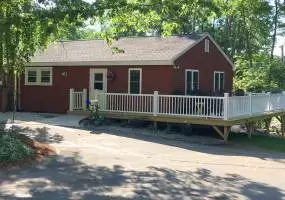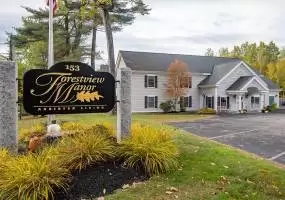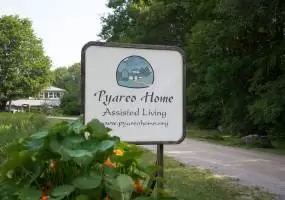![]()
Assisted Living
As individuals age, the necessity for senior care becomes increasingly apparent. Health impediments like reduced mobility, intricate medication regimens, and declining vision can jeopardize independent living. While nursing homes often come to mind regarding residential care for seniors, assisted living emerges as a preferable alternative for those requiring day-to-day assistance without constant medical supervision.
Assisted living presents a long-term residential care solution tailored for older adults seeking support with activities of daily living (ADLs) and other daily tasks such as laundry and transportation. Within assisted living facilities (ALFs), residents receive personalized assistance while benefiting from the security of round-the-clock staff. This setup allows residents to maintain their desired level of independence, making assisted living an ideal choice for seniors encountering health challenges.
With a multitude of assisted living facilities scattered across the United States, housing over 800,000 residents collectively, selecting the appropriate community can be daunting. Our comprehensive guide aims to shed light on the world of assisted living, aiding in the decision-making process for yourself or a beloved family member. From understanding the nuances of assisted living to navigating costs and selecting the perfect community, we offer invaluable insights to facilitate informed choices.
What Is Assisted Living?
Assisted living stands as a crucial form of residential care tailored to older adults requiring assistance with daily activities. Within these communities, seniors benefit from personalized care and aid with activities of daily living (ADLs) such as bathing, dressing, grooming, and toileting, fostering independence to the fullest extent possible.
Contrary to the sterile environment often associated with “retirement homes,” a glimpse into a typical assisted living community reveals a vibrant and nurturing atmosphere. While nuances may vary, modern assisted living facilities across the U.S. now offer an array of convenient services, amenities, and engaging activities. These offerings ensure residents receive the necessary support and care within a comforting environment they can truly call “home.”
How Does Assisted Living Compare to Other Senior Living Options?
Assisted living occupies a unique position between independent living communities and skilled nursing facilities, providing a level of care that suits individuals requiring assistance with activities of daily living (ADLs) while still valuing independence. However, it’s essential to recognize that not all seniors may find assisted living to be the optimal solution. Below, we delineate how assisted living compares to other prevalent senior living options.
Assisted Living Communities vs. Nursing Homes
Despite common misconceptions, assisted living facilities and nursing homes diverge significantly in their approach to senior care.
The pivotal disparity lies in the type of care provided:
assisted living communities furnish personal care and assistance with ADLs for residents necessitating such support, without mandating skilled nursing care. Conversely, nursing homes furnish round-the-clock skilled care and medical aid. For instance, a nursing home would be suitable for an individual requiring a feeding tube, a level of care beyond the scope of assisted living.
Another notable contrast lies in the breadth of services and amenities available. Assisted living communities typically offer a broader array of social activities and outings, fostering a communal atmosphere distinct from the more clinical environment of nursing homes. While nursing homes may entail higher expenses compared to ALFs, Medicaid and Medicare coverage for skilled nursing home costs is more feasible, a benefit rarely extended to assisted living.
For further insights into nursing homes and their suitability for senior care needs, visit our dedicated Nursing Homes page.
Assisted Living vs. Memory Care
Memory care represents a specialized form of long-term care tailored for seniors grappling with Alzheimer’s disease and other dementia-related conditions. Today, numerous assisted living communities integrate memory care services alongside their standard offerings, often within a dedicated wing or separate building on-site. The critical disparity between these two options lies in their focus: memory care is uniquely designed to address the needs of individuals with dementia, whereas assisted living caters to a broader spectrum of senior care requirements.
Every facet of memory care, spanning from the nature of organized activities to the implementation of physical safety measures like secured courtyards and alarmed doors, is meticulously crafted to support individuals coping with dementia. Given the heightened staff training and enhanced safety protocols necessary, memory care typically incurs a higher cost compared to assisted living. On average, it can amount to 20-30% more in monthly expenses than an ALF situated in the same locale.
For further elucidation on memory care and its suitability for senior care needs, we invite you to explore our dedicated Memory Care page.
Assisted Living vs. Independent Living:
Understanding Senior Housing Options
Independent living facilities provide seniors with a residential community lifestyle, offering a plethora of amenities similar to those found in an assisted living facility (ALF). Gyms, exercise classes, communal dining areas with prepared meals, and organized social activities are standard features in independent living communities. However, the primary distinction between assisted living and independent living lies in the absence of personal care assistance or aid with activities of daily living (ADLs) in the latter.
Due to this disparity, independent living communities are ideally suited for seniors who remain fully independent in their day-to-day lives and do not require any assistance with their daily activities. While independent living establishments typically offer prepared meals, maintenance services for both interior and exterior spaces, as well as housekeeping and laundry assistance, they do not provide the same level of personal care as assisted living.
For further insights into the benefits and features of independent living as a senior care option, we invite you to explore our dedicated Independent Living page.
Understanding the Cost of Assisted Living
In the United States, the average monthly cost of assisted living is approximately $4,051. However, it’s essential to recognize that this figure varies significantly depending on the state, city, and even among different communities within the same area. When researching ALFs for yourself or a loved one, it’s crucial to gather cost information from each individual community. Assumptions based on area averages may not accurately reflect the pricing of specific ALFs.
Another crucial factor to consider is the cost structure of a community. Some assisted living facilities charge an all-inclusive monthly fee covering a range of services and amenities, while others opt for itemized billing, charging separately for specific services utilized. When weighing your options, consider your preferences regarding billing structures and whether it’s feasible to select a facility with itemized billing. It’s important to note that in facilities with itemized billing, costs are likely to increase as the resident’s needs evolve and require more assistance. Conversely, an all-inclusive monthly bill tends to remain relatively steady over time, with standard cost-of-living adjustments from year to year.
By carefully evaluating cost structures and understanding the variations in pricing among assisted living communities, you can make an informed decision that aligns with your financial circumstances and long-term care needs.
Financial Assistance Options for Assisted Living
When seeking financial assistance for long-term care, it’s essential to explore various avenues, especially considering that Medicare does not typically cover assisted living expenses. Beyond private pay, several options can help alleviate the financial burden associated with assisted living:
Medicaid:
In many states, Medicaid offers financial assistance for seniors requiring assisted living services. This assistance often comes in the form of Home and Community Based Services (HCBS) waivers, providing expanded coverage beyond standard Medicaid. Each state’s Medicaid program offers different HCBS waivers, so it’s crucial to research the options available in your area.
Life Insurance:
While life insurance policies are typically intended to provide for loved ones after the policyholder’s passing, some individuals may choose to cash out their policy early to cover long-term care expenses. Depending on the policy, insurance companies may buy back the policy for a portion of its cash value or facilitate a third-party “life settlement.” However, it’s essential to weigh the advantages and disadvantages of using life insurance for long-term care funding.
Long-Term Care Insurance:
Long-term care insurance policies specifically cater to covering some of the costs associated with long-term care, including assisted living. While these policies may not cover all forms of long-term care, they can provide significant financial assistance. It’s important to review the policy details to understand the coverage limitations and eligibility criteria.
VA Aid and Attendance Benefit:
Veterans and their spouses may qualify for the Aid and Attendance (A&A) benefit, a monthly payment provided in addition to standard VA pensions. This benefit aims to assist disabled and/or elderly veterans in accessing necessary care, including assisted living. Eligibility criteria include meeting income requirements and having sustained combat-related injuries. For more information, veterans can contact their local VA office.
Reverse Mortgages:
Seniors who own their homes and are transitioning to assisted living may consider utilizing reverse mortgages to cover expenses. Reverse mortgages allow individuals to borrow against their home’s value without immediate sale requirements. However, it’s essential to understand the terms and repayment obligations associated with reverse mortgages.
Understanding the Services Offered in Assisted Living
As assisted living communities aren’t regulated nationally, there may be variations in services and standards from state to state and facility to facility. Some states mandate rigorous training for assisted living staff, while others have minimal requirements.
Nevertheless, there are several standard services offered across the majority of assisted living communities throughout the U.S. These services primarily focus on personal care, providing assistance with activities of daily living, including:
- Eating
- Dressing
- Grooming
- Bathing
- Toileting
- Walking
- Medication management
In addition to personal care, nearly all assisted living communities nationwide offer the following services:
- Prepared meals
- Scheduled transportation
- Housekeeping
- Cleaning services
- Organized activities
While some communities include these services in the monthly payment, others may charge on a per-service basis. Therefore, it’s essential to inquire with community staff about any additional fees associated with specific services.
By understanding the array of services available in assisted living communities, individuals and families can make informed decisions regarding their loved ones’ care needs.
Exploring these financial assistance options can help individuals and families navigate the costs of assisted living and ensure access to necessary care without undue financial strain.
Exploring Services and Amenities in Assisted Living
Modern assisted living communities have evolved far beyond the traditional retirement homes of the past. They now offer an extensive array of amenities to ensure residents’ comfort and enjoyment. Each community differs in its offerings, with some providing basic amenities while others resemble luxurious resorts.
Below, you’ll find a detailed breakdown of common services and amenities available in today’s assisted living facilities:
Service or Amenity
Description
Controlled Access
A security system that may include secured gates requiring permission for entry or a sign-in system at the front desk for visitors.
Emergency Call System
Wireless alert systems allowing residents to call for help from their rooms at the push of a button.
Nursing Staff
Licensed nursing staff, either on-site or on-call, capable of providing medical care such as dressing wounds, catheter or IV placement, and more.
Concierge Service
Front desk staff available, sometimes 24/7, to answer residents’ inquiries and calls.
Transportation
Scheduled community shuttle or car services provided for medical appointments or trips to nearby locations for shopping, dining, or community outings.
Social Activities and Events
Organized by staff, these include classes, games, social gatherings (like happy hours or parties), clubs, volunteer programs, cultural performances, lectures, and outings to local attractions.
Salon/Barbershop
On-site facilities offering salon or barbershop services such as haircuts, grooming, manicures, and in some cases, massages.
Gym/Fitness Room
Equipped with exercise equipment, weights, and fitness classes, some facilities may include a swimming pool, sauna, or hot tub.
Wellness Program
Tailored programs to enhance residents’ nutrition, physical fitness, and overall well-being.
Outdoor Common Areas
Spaces for residents to enjoy the outdoors on community property, ranging from patios to communal gardens.
Computer Room
Equipped with computers, printers, and resources for residents’ use.
Wi-Fi
Wireless internet access provided throughout the facility for residents and visitors.
Laundry and Linen Services
Scheduled washing and drying of laundry and bed linens with pick-up and drop-off services to residents’ apartments.
Understanding the range of services and amenities offered in assisted living communities allows individuals and families to make informed decisions regarding their preferred living environment.
Signs That It May Be Time for Assisted Living
Deciding to transition an aging loved one from their current home is a significant decision, encompassing both emotional and practical considerations. Primarily, the priority is ensuring the individual’s safety and well-being. While each circumstance varies, certain signs serve as crucial indicators that it might be time for a senior to consider assisted living (ALF).
- Struggling with Daily Activities: Increasing difficulty in managing everyday tasks.
- Recent Accidents: Incidents at home or while driving, such as falls, indicating potential safety risks.
- Slow Recovery: Lengthy recovery periods following accidents or illnesses.
- Physical Changes: Observable weight loss or increased frailty.
- Neglected Appearance: Signs like stained clothing or unkempt hair.
- Isolation: Feelings of loneliness due to a lack of companionship.
- Financial Mismanagement: Unpaid bills, unopened mail from creditors.
- Unsafe Driving: Behaviors like not wearing a seatbelt or easily distracted driving.
- Poor Nutrition: Stale or expired food in the home.
- Home Maintenance Issues: Broken appliances, neglected housekeeping.
Ultimately, the decision to transition to assisted living rests with the individual and their loved ones. However, experiencing one or more of these signs suggests that the senior could benefit from the supportive services available in an assisted living facility.
Choosing the Right Assisted Living Community
Once you’ve determined that assisted living is the next step, selecting the right community becomes paramount. This decision, often the most challenging, involves finding a place for your loved one that truly feels like home.
Whenever possible, touring a facility before making any decisions is ideal. This firsthand experience provides insight into available amenities and resident lifestyles. Nowadays, many communities offer high-quality virtual tours, particularly useful when in-person visits aren’t feasible or safe. While in-person tours allow interaction with current residents, virtual tours offer a glimpse into the community’s atmosphere beyond mere photos.
Whether touring in-person or virtually, watch for these indicators of a top-notch assisted living facility (ALF):
- Regular Health Assessments: Look for communities that conduct initial and follow-up health assessments to tailor care plans as needed, ensuring residents receive appropriate care as their needs evolve.
- Transparency: Trustworthy communities readily provide details about costs, policies, and contracts. If information is not promptly forthcoming, consider exploring other options.
- Low Staff-to-Resident Ratios: Inquire about staff-to-resident ratios, ensuring they meet or exceed state requirements. Adequate staffing levels are crucial for personalized care and attention.
- Efficient Communication: Seamless communication is vital. During the tour and inquiry process, evaluate the community’s responsiveness and accessibility. Difficulty in reaching staff or obtaining information may signal communication challenges.
- Amenities: While personal care assistance is standard, amenities vary between communities. If specific amenities, such as a gym or swimming pool, are important, verify their availability at each prospective community.
By paying attention to these factors, you can find an assisted living community that meets your loved one’s needs and provides a supportive, enriching environment.
Frequently Asked Questions
What Does Assisted Living Help With?
Assisted living is designed to provide comprehensive support for seniors, catering to various aspects of their well-being and quality of life. Here’s how assisted living can assist:
Personal Care and Activities of Daily Living (ADLs): Communities offer assistance with essential tasks such as bathing, dressing, grooming, toileting, mobility assistance, and medication management. This ensures that seniors receive the support they need to maintain their independence and dignity.
Addressing Isolation and Loneliness: Foster a vibrant community environment where seniors can engage in social activities, interact with peers, and form meaningful connections. This helps combat feelings of isolation and loneliness, promoting mental and emotional well-being.
Nutrition and Wellness: Facilities provide nutritious meals tailored to the dietary needs of residents. Regular access to balanced meals helps prevent weight loss and ensures proper nutrition, contributing to overall health and wellness.
Safety and Emergency Care: Communities prioritize the safety of residents by implementing various security measures and emergency response protocols. Trained staff members are available round-the-clock to provide assistance during emergencies, enhancing residents’ sense of security and peace of mind.
Health and Wellness: Facilities offer wellness programs, fitness classes, and recreational activities to promote physical activity, mental stimulation, and overall health. These programs are designed to support seniors in maintaining an active and fulfilling lifestyle.
However, it’s essential to note that assisted living is not suitable for seniors with advanced medical conditions such as dementia, Alzheimer’s disease, or those requiring specialized medical care. For individuals with these needs, higher levels of care, such as skilled nursing and memory care services, are more appropriate options.
Who Is a Good Candidate for Assisted Living?
A good candidate for assisted living is someone who requires assistance with the fundamental activities of daily living, such as bathing, dressing, grooming, walking, managing medications, toileting, and eating. Additionally, individuals who anticipate needing this assistance soon are also suitable candidates. Other indicators that suggest the appropriateness of assisted living include challenges in maintaining one’s home or cooking meals, inability to drive safely, and growing social isolation and loneliness.
What Services Are Usually Included in Assisted Living?
The typical services encompass room and board along with personal care assistance. Additionally, most communities offer prepared meals, personalized care plans, first-aid care, medication management, and occasionally supplementary amenities like transportation and fitness programs as part of the monthly fee. It’s important to note that some communities adopt a fee-for-service or itemized billing approach, so it’s advisable to inquire with each facility regarding the specific inclusions in the monthly cost.
What Is the Difference Between Assisted Living and a Nursing Home?
The primary distinction between assisted living and a nursing home lies in the level of medical care provided. Nursing homes offer skilled medical care and rehabilitation services, whereas assisted living does not provide such specialized medical attention. Assisted living is designed for individuals who require assistance with personal care and daily activities but do not need skilled medical care. Both assisted living and nursing homes serve as long-term residential care options for seniors.
When Is It Time for Assisted Living?
When a senior faces challenges in performing daily activities independently. Signs indicating this transition include neglecting personal appearance, experiencing accidents while alone at home or driving, struggling to manage medications, and significant weight loss or malnutrition. As each individual’s circumstances vary, consulting a gerontologist or the senior’s primary care physician can provide valuable insights into the need for transitioning to assisted living.
Does Insurance Pay for Assisted Living?
Expenses may be covered by insurance in certain cases. While Original Medicare (Medicare parts A and B) typically doesn’t cover assisted living costs, some Medicare Advantage and Medicare Supplement plans may offer coverage. Medicaid, available in many states, and associated waiver programs often provide financial assistance for assisted living. Furthermore, individuals with long-term care insurance frequently have coverage for assisted living. To determine eligibility for assistance with assisted living costs, seniors and their families should review the details of the senior’s insurance policy or policies.
NH Assisted Living By Region
- Bedford NH Assisted Living
- Manchester NH Assisted Living
- Portsmouth NH Assisted Living
- NH Seacoast Assisted Living
- Lakes Region Assisted Care NH
- Sunapee NH Assisted Living
- White Mountains
- Monadnock
- Great North
- What’s the difference between assisted living and nursing care?
- Community spotlight: active adult living
- Your Type – Active Adult Living
2 Evaluating Assisted Living Communities










